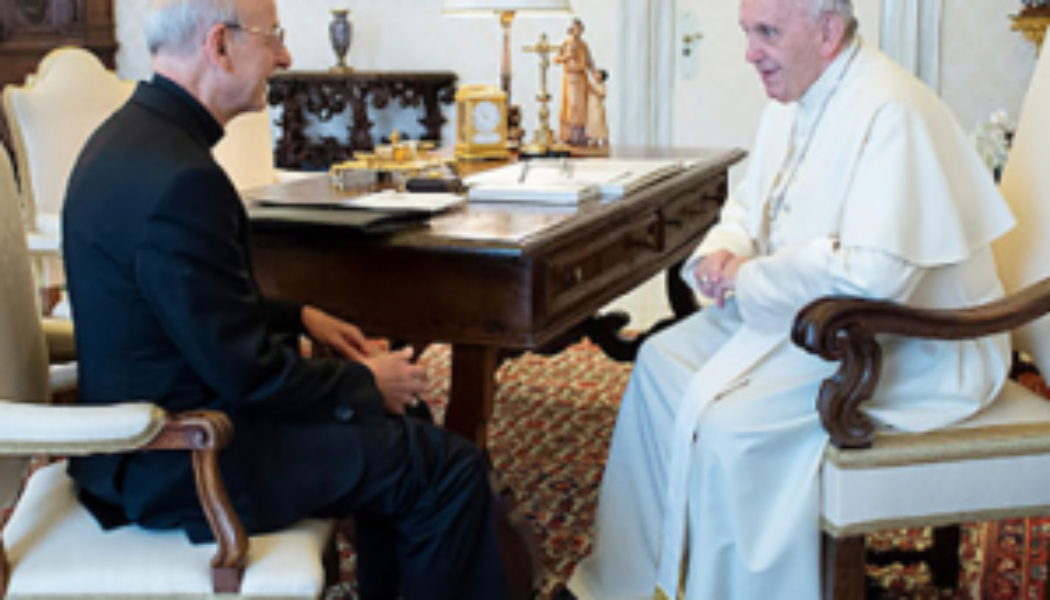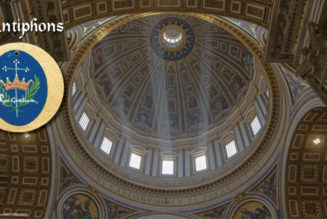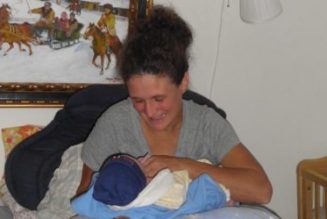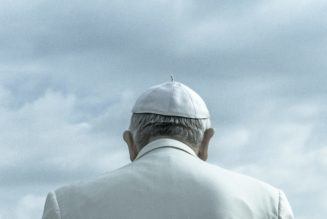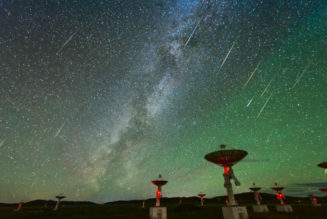
> Italiano
> English
> Español
> Français
> All the articles of Settimo Cielo in English
*
There has been a lot of yarnspinning over the enmity between the Society of Jesus and Opus Dei. But the leaders of the Work thought and feared that the fairy tale would become reality right from the start, when in 2013 the Jesuit Jorge Mario Bergoglio ascended to the chair of Peter. Their decision was to close themselves off in complete silence, to go into the shadows like a mole in its burrow, in the hope that this pontificate would pass by without harming them, without demolishing their achievements in the golden years of Benedict XVI and even more so of John Paul II.
Instead this is just what has happened. First at a slow pace, then with an ever quickening tempo until the final blow this August, Pope Francis has dismantled what Opus Dei had built itself into over decades.
In the title, nothing changes: the Work continues to be a “personal prelature,” the only one with this status in the Church. But first with the apostolic constitution “Praedicate evangelium” of March 19 2022, then with the apostolic letter “Ad charisma tuendum” of the following July 14, and then again with the motu proprio of August 8 2023, Pope Francis has emptied it of its substance, has downgraded it to a “public clerical association of pontifical right with the faculty of incardinating clerics,” that is, a mere assemblage of priests, today about 2,000, put under the supervision of the Vatican dicastery for the clergy, no longer with authority over those 90,000 laymen who were its power base in society, now back under the canonical jurisdiction of their respective parish priests and bishops. Just so: because this is what is established by the new canon 296, modified by Francis, of the code of canon law, which in turn refers to canon 107 of the same code (unless the contrary interpretation of Juan Ignacio Arrieta, secretary of the dicastery for legislative texts, holds true, which says that according to canon 302 of the same code, associations simply defined as “clerical” are indeed run by clerics, but are also made up of the faithful).
In the aspirations of Opus Dei, largely realized during the golden years, the personal prelature was to be a sort of diocese not with a delimited territory but extended to the whole world, with its bishop in the person of the prelate of the Work, its clergy and faithful. It was therefore supposed to be part, in this very special form, of the hierarchical structure of the Church, and to report in the curia to the congregation for bishops.
The recognition of Opus Dei as a personal prelature dates back to 1982, seven years after the death of the founder, the Spaniard Josemaría Escrivá de Balaguer, proclaimed a saint in 2002. But then, contrary to its expectations, the 1983 code of canon law did not place it among the hierarchical structures but in the chapter “De populo Dei.”
In recompense, Escrivá’s two successors were made bishops: first Álvaro del Portillo, then Javier Echevarría, who was in office when Bergoglio became pope. At his death in 2017 he was succeeded by the current prelate, Fernando Ocáriz (in the photo), whom Francis did not however gladden with the episcopal dignity. And already this was the first blow that the Jesuit pope inflicted on the Work, a prelude to the subsequent absolute ban of 2022 on the prelate’s being honored with episcopal orders, leaving in place his right to “use the insignia corresponding” to the honorific title of “supernumerary apostolic protonotary.”
At the beginning of Francis’s pontificate, Opus Dei boasted two top-level cardinals: in the curia, Julián Herranz Casado, an authoritative canonist; in Peru, Juan Luis Cipriani Thorne, archbishop of Lima. Moreover, numerous dioceses all over the world were headed by members of the Work: half a dozen in Peru alone, all with bishops of conservative bent, promptly opposed, according to script, by Jesuit bishops of opposite leaning.
The fact is that, under the reign of Francis, Herranz and Cipriani quickly made their exit, partly for reasons of age, and the bishops of the Work also disappeared bit by bit. Today in Peru there remains only one, Ricardo García García, at the head of the tiny territorial prelature of Yauyos-Cañete-Huarochiri.
A glimmer of hope for a truce came with the 2016 appointment as director of the Vatican press office of the American Greg Burke, former Rome correspondent for Fox News and Time magazine, a “numerary” of Opus Dei, meaning an unmarried member under the vows of chastity, poverty, and obedience, like the famous spokesman of John Paul II Joaquín Navarro-Valls.
Burke succeeded the Jesuit Federico Lombardi and for years had been groomed in the secretariat of state with the title of “senior communication advisor,” in view of this promotion of his. But in fact the pope treated him very badly, availing himself of his own personal communication officers and systematically sidestepping the press office.
In October of 2018, during the synod on young people, Burke was even denied the task of holding the daily briefings on what was happening in the assembly. The following December 31 he resigned from the post, and with him his deputy, the Spaniard Paloma García Ovejero.
Today in the Vatican Opus Dei no longer holds any role of significance, after losing way back in 2012 the presidency of the IOR, the “bank” of the Holy See, with the chucking out of its “supernumerary” Ettore Gotti Tedeschi. In the world hierarchy, the only prominent member of the Work today is José Horacio Gómez, archbishop of Los Angeles since 2010 and president of the episcopal conference of the United States from 2016 to 2019, but never made a cardinal by Pope Francis.
While on the contrary the reigning pope’s Jesuit entourage is growing bloated, with a good three cardinals at its head: the Luxembourgian Jean-Claude Hollerich, director of the synod on synodality underway, the Canadian Michael Czerny, and the Italian Gianfranco Ghirlanda, all with top-level roles. There is also a fourth Jesuit cardinal, the Spaniard Luis Francisco Ladaria Ferrer, outgoing prefect of the dicastery for the doctrine of the faith, but he has the defect of not agreeing with the doctrinal drifts allowed to run free by Francis, who in fact has got rid of him by sending him into retirement and replacing him with a figure of diametrically opposite outlook.
The day after the papal motu proprio of August 8, Opus Dei prelate Ocáriz declared total submission to what was established. Which a great expert on the subject, Giancarlo Rocca, a priest of the Society of Saint Paul and since 1969 the editor of the monumental “Dictionary of the Institutes of Perfection,” summarized as follows on “Settimana News”:
“Pope Francis has reduced Opus Dei to a status even lower than that of a secular institute, as had been approved in 1950, with the honor of having been the first and the model of the secular institutes. At the time, as a secular institute, Opus Dei had a president general and could incardinate priests and laymen. In the new formulation of Pope Francis, only clerics can be incardinated in the new public clerical association that reports to the dicastery for the clergy. It appears evident that Opus Dei is being deprived of the laity, who constituted its strength and who can no longer be considered its members.”
Geraldina Boni, professor of canon and ecclesiastical law at the University of Bologna, has in turn identified “a contradiction difficult to resolve” in the assimilation made by Francis between the qualification of “personal prelature” still applied to Opus Dei and its new definition as an association made up of clerics only.
But few seem to care about this umpteenth confusion brought about by the reigning pope, also due perhaps to the widespread aversion that has hindered Opus Dei for decades, regardless of its actual merits or faults.
A striking proof of this historic aversion can for example be read here, in this conversation published posthumously in 2003 between four illustrious and esteemed Italian Catholic intellectuals, the first of whom was a key man in determining the development of Vatican Council II:
> The Council “Turned Upside Down” and Opus Dei. Startling Revelations from Giuseppe Dossetti
On Opus Dei it does not appear that Bergoglio thought much differently than they did, seeing how he has reduced it, as pope.
———-
POST SCRIPTUM – After the publication of this article, Settimo Cielo received a clarification signed by Rudolf Larenz, a priest incardinated in Opus Dei and residing in Finland, in Helsinki.
The clarification can be read in its entirety on this other page of Settimo Cielo:
> “I would like to draw your attention to four imprecisions…”
.
